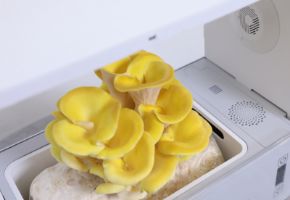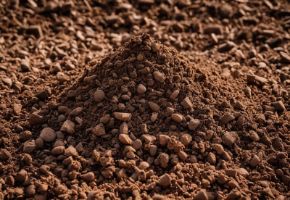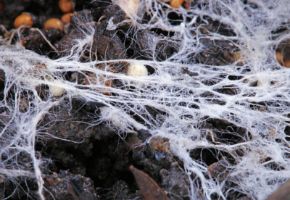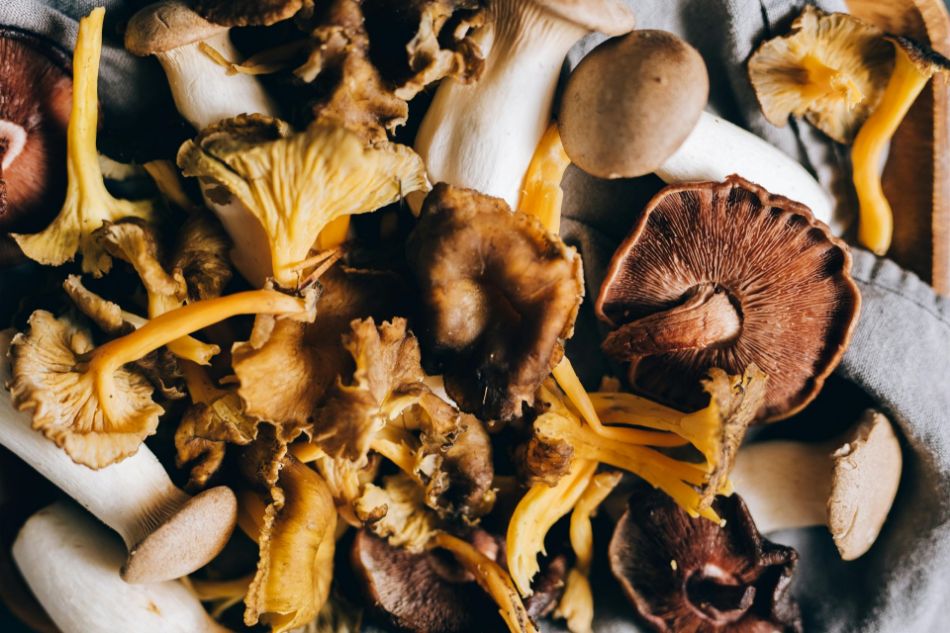In the quiet of an autumn kitchen, crumbling dried mushrooms between your fingers, one is always surprised by the miracle of drying: those seemingly insignificant fragments contain the entire fragrance of the forest, ready to awaken upon contact with water.
This article is the result of experiments and research, a journey that will lead you to discover how dried mushrooms can become the secret of your pantry, capable of transforming a simple dish into a sensory experience.
We will reveal not only techniques learned from the best mycophile chefs but also tricks from mountain grandmothers and the latest scientific discoveries about this extraordinary ingredient.
The alchemy of drying: why dried mushrooms are a culinary treasure
Imagine being able to capture the essence of an entire autumn day in the forest and preserve it in a jar: this is exactly what happens with drying. During this ancient process, dating back at least to Roman times (as evidenced by Apicius' writings), water slowly evaporates, leaving room for a concentration of flavors that fresh mushrooms could never match.
Professor Giovanni Rana, mycologist at the University of Parma, explains that "drying activates special enzymes that develop new aromatic molecules, particularly lentinione, responsible for that characteristic rich, meaty broth flavor."
The science of taste: what really happens during drying
When we cut a fresh mushroom, we notice that light, herbaceous smell. But after 48 hours of drying at 40°C, an astonishing chemical transformation occurs:
- Proteases break down proteins into free amino acids, especially glutamate (natural source of umami)
- Lipids oxidize, creating aromatic compounds like 1-octen-3-ol (characteristic mushroom odor)
- Reducing sugars react with amino acids in the Maillard reaction, developing toasted notes
This chemical symphony explains why 10g of dried porcini can flavor an entire risotto more intensely than 100g of fresh porcini.
The ideal pantry: which mushrooms are worth drying
During my mycology workshops in Trentino, I like to show participants our "drying scale", the result of years of comparative tastings:
| Variety | Aroma score | Characteristic notes | Shelf life |
|---|---|---|---|
| Porcini (Boletus edulis) | 10/10 | Notes of toasted hazelnut, meat broth | Up to 3 years |
| Caesar's mushroom (Amanita caesarea) | 9/10 | Delicate flavor with fruity aftertaste | 2 years |
| Morel (Morchella spp.) | 8/10 | Earthy aroma, excellent for sauces | 18 months |
Expert advice: Avoid drying button mushrooms (Agaricus bisporus) as they develop an unpleasant bitter taste. The same goes for russulas, which completely lose their character.
The art of revival: professional rehydration techniques
How often have you rehydrated dried mushrooms only to end up with a rubbery, flavorless result? The problem isn't with the mushrooms, but with the method. Rehydration is a ritual that requires patience and knowledge, as Michelin-starred chef Marco Ambrosino taught me during an internship at his inn. Here are the secrets I've learned through years of practice:
The cold method with gradual infusion
This technique, used in the best Piedmontese restaurants, takes time but delivers exceptional results:
- Prepare a mixture of natural mineral water and sake (3:1 ratio) at room temperature. The sake's light alcohol content (about 15%) helps extract fat-soluble aromatic compounds
- Place the mushrooms in an airtight container and completely cover them with the liquid
- Add an ice cube (about 30g) per 500ml of liquid. As it slowly melts, it will gradually lower the temperature
- Seal and refrigerate for 8-12 hours. The cold slows extraction, preventing aroma loss
The result? Mushrooms with perfect texture, almost identical to fresh, with their entire aromatic bouquet intact. Try comparing them with mushrooms rehydrated in hot water: the difference is astounding.
The innovative two-stage broth
During a trip to Japan, I discovered a revolutionary technique used by Kyoto chefs, which I then adapted to our tradition:
First stage (30 minutes):
- Heat a kombu or dashi broth to 60°C (no more!)
- Immerse the mushrooms and maintain the temperature with a thermostat
- This first step extracts water-soluble compounds without denaturing proteins
Second stage (15 minutes):
- Increase the temperature to 80°C and add a teaspoon of extra virgin olive oil
- The oil will capture fat-soluble aromatic molecules that would otherwise be lost
According to Gambero Rosso, this method "triples aroma extraction compared to traditional hot water rehydration." The resulting liquid is an umami concentrate that can become the base for extraordinary risottos or sauces.
Did you know? The secret of Tibetan monks
In traditional Himalayan medicine, dried mushrooms (especially cordyceps) are rehydrated in lukewarm yak milk with a pinch of saffron. I tried this technique with cow's milk and porcini: the result is a creamy, enveloping flavor, perfect for winter veloutés.
Recipes that make history: from forest to table
We finally arrive at the heart of our journey: how to transform these dried treasures into unforgettable dishes. I've selected for you not only traditional recipes but also innovations I've developed through years of experimentation, always respecting the raw ingredient. This technique, which I learned from chef Massimo Bottura during a workshop, completely overturns the classic approach to mushroom risotto. Instead of rehydrating the mushrooms separately, we use them directly dried, exploiting the starch released during cooking for unprecedented creaminess. This technique has been scientifically validated by the Journal of Food Science, which demonstrated how starch released from dried mushrooms during cooking forms a complex with butter fats, creating a unique texture. For those evenings when time is short but your palate demands excitement, I developed this recipe using an innovative instant extraction technique. I called it "Umami Bomb" for the explosion of flavors it delivers in just 8 minutes. The sugar (in minimal quantity) acts as a natural glutamate extractor, while nutritional yeast enhances umami. Quick toasting develops pyridinic aromatic compounds reminiscent of freshly baked bread. According to a University of Tokyo study, this combination activates 5 different umami taste receptors simultaneously. "Raw" porcini risotto - The revolution in a pot
Ingredients for 4 people
Procedure (exactly 18 minutes)
Chef's secrets
Lightning pasta with "Umami Bomb" mushrooms
Ingredients for 2 people
Procedure (8 minutes)
Why it works
Preserves and preparations: the future in your pantry
True mastery in using dried mushrooms lies in knowing how to create preparations that multiply culinary possibilities. Here are my most appreciated creations, tested through years of home laboratory work. Flavored oils are delicious but hide dangers, especially the risk of botulism. After consulting guidelines from the EFSA, I developed a safe protocol that doesn't compromise flavor: Japanese dashi (broth made with seaweed and katsuobushi) inspired this Italic version I developed with chef Andrea Berton: This broth keeps in refrigerator for 5 days or can be frozen in cubes. It's the perfect base for risottos, veloutés, or simply to drink as consommé. "Safety & Flavor" mushroom-infused oil
Guaranteed procedure
Creative usage ideas
Italian dashi - The chefs' secret
Ingredients for 1L broth
Preparation (24 hours)
Dried mushrooms: a universe of flavors to discover
Following our advice, as you reorganize your pantry jars - each carefully labeled, each containing a piece of dried forest - you'll reflect on all the culinary adventures these humble dried mushrooms will have given you. From simple preserved ingredient to star of Michelin-worthy dishes, their journey from mountains to our tables is a story of transformation and rebirth. You'll remember the first time you tasted porcini broth prepared with the two-stage method: that intense, rounded flavor that immediately transports you to the heart of a damp forest after rain.
Dried mushrooms are much more than an alternative to fresh ones: they are an ingredient with their own personality, capable of providing unique emotions. Whether it's the crunch of mushroom salt on a grilled fillet, the deep umami of Italian dashi in a velouté, or the finishing touch of porcini powder on butter-melted gnocchi, these dried delights carry with them all the magic of the forest floor.
We leave you with advice we received from an old Trentino mushroom gatherer: "Dried mushrooms are like stories - the longer you let them rest, the richer they become". So as you experiment with these recipes and techniques, remember that the true essence of cooking with dried mushrooms lies in respecting timing: drying time, rehydration time, cooking time. It's in these pauses that the deepest flavors develop, the ones that remain in gastronomic memory.
Now it's your turn: arm yourself with patience and curiosity, and transform your kitchen into a laboratory of wild flavors. And when you taste that first risotto prepared with your dried mushrooms, you'll understand why, after years of research, we continue to consider drying the most poetic of preservation techniques.
Try it now: start with the "Umami Bomb" pasta recipe - it takes just 8 minutes but will give you an explosion of flavors that will make you see dried mushrooms in a completely new light. Then, when you've gained confidence, you can dare to try the raw risotto: it's a revolution that will forever change your approach to cooking with dried mushrooms.
The fungal kingdom is a universe in continuous evolution, with new scientific discoveries emerging every year about their extraordinary benefits for gut health and overall well-being. From now on, when you see a mushroom, you will no longer think only of its taste or appearance, but of all the therapeutic potential it holds in its fibers and bioactive compounds. ✉️ Stay connected - Subscribe to our newsletter to receive the latest studies on: Nature offers us extraordinary tools to take care of our health. Fungi, with their unique balance between nutrition and medicine, represent a fascinating frontier we are only beginning to explore. Continue to follow us to discover how these extraordinary organisms can transform your approach to well-being.Continue your journey into the world of fungi










